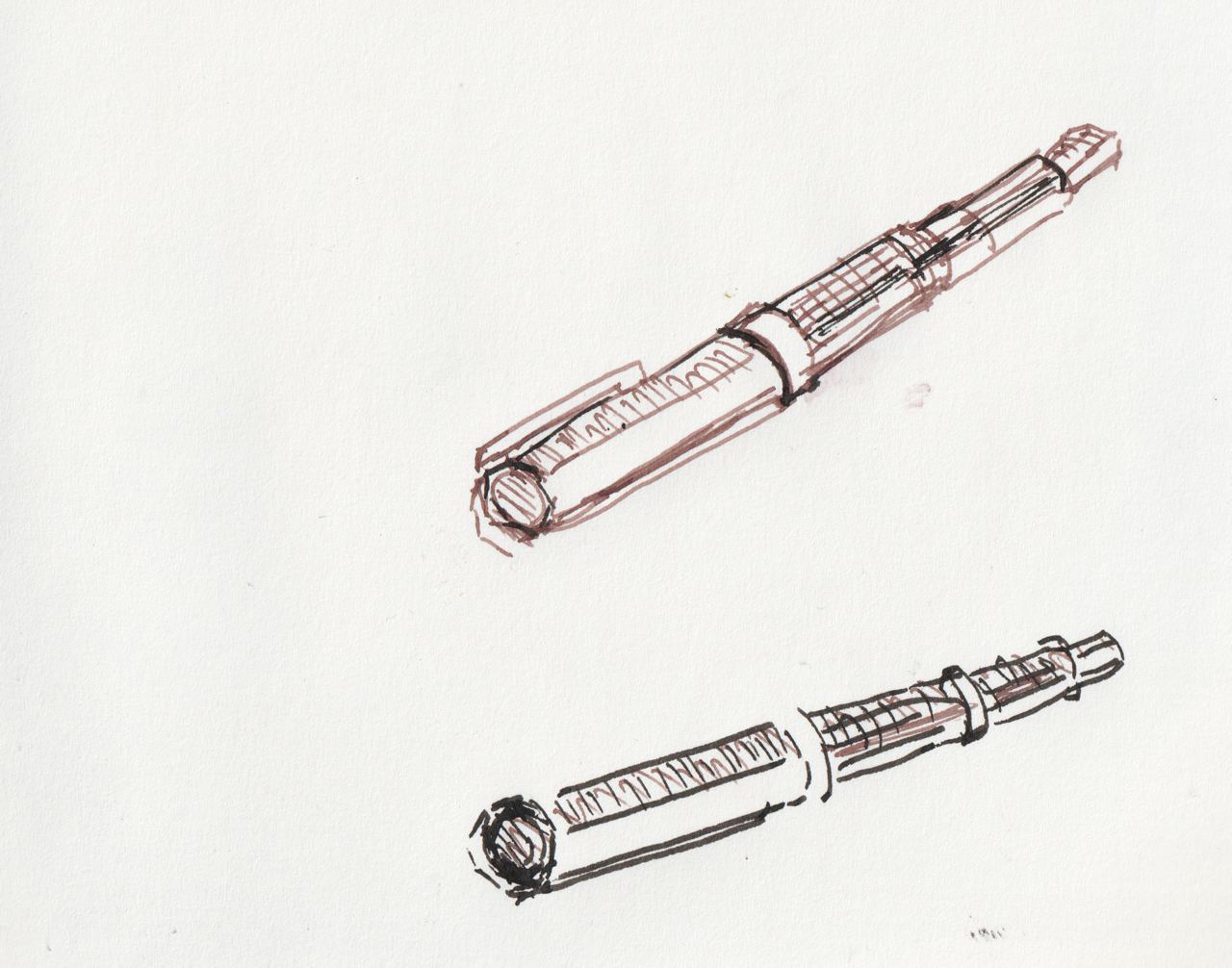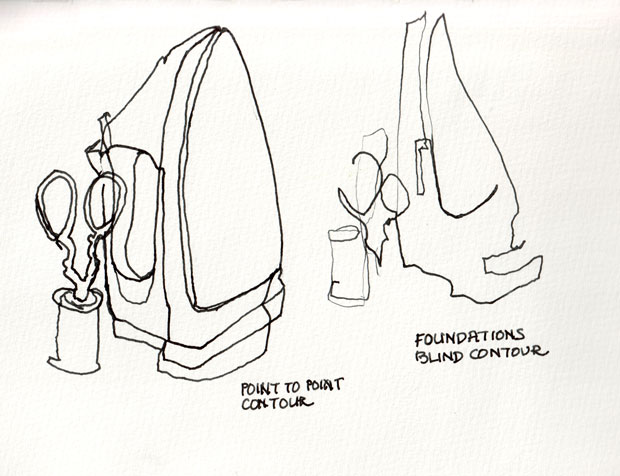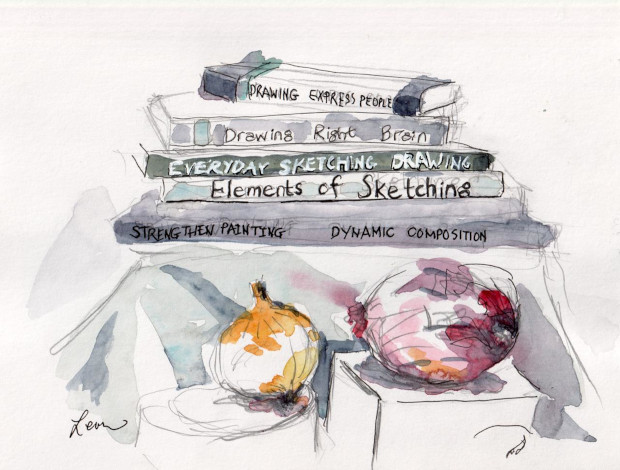Learn to See, Learn to Draw
A lot of people say they cannot draw. My response is: when you were in first grade, did you know algebra? Probably not.
The most important skill in drawing is learning to see. We think we can see, but often we think in symbols instead of actually seeing what is front of us and drawing only what we can see.
Get Started with Drawing

If you want to learn to draw, grab a pen and an old notebook. It doesn’t matter what pen, as long as it is not erasable. Any old notebook will do, even one that is almost filled. The less you care about anything that is already in the notebook, the better. Walk around your neighborhood. Draw whatever you see. Make sure not to show it to anyone. If you care about these first drawings, you probably won’t even get started.
Draw Blind: Learn to See Contours
Now that you have drawn something, it is time to do a little seeing. Set up a simple still life. It could be cups and boxes. It could be onions and apples. It doesn’t matter. Don’t look at your paper, and draw. Don’t cheat, especially the first time. For the next drawing, you can cheat a little and look. Try drawing in a continuous line. Do a third one. How do they look? Drawing without looking at the paper is called blind contours drawing. Drawing the contours of the objects in a scene without lifting your pen much from the paper is called a continuous line drawing.

On the left is an example of a continuous line drawing of an iron. On the right is a blind contours drawing of the same iron.
To learn more about contour drawings, you might read the classic The Natural Way to Draw. Here is an excerpt:
Sit close to the object which you intend to draw. Focus your eyes on some point along the contour of the model. (The contour approximates what is usually spoken of as the outline or edge.) Place the point of your pencil on the paper. Imagine that the point is touching the object instead of the paper. Without taking your eyes off the object, wait until your are convinced the pencil is touching that point on the object upon which your eyes are fastened.
Then move your eyes slowly along the contour of the model and move the pencil slowly along the paper… this means that you must draw without looking at the paper.
Source: The Natural Way to Draw by Kimon Nicolaides, p. 9
Practice, Practice, Practice
Keep up with the drawing. Tuck a small sketchbook into your purse or back pack. Leave one in your kitchen or the drawer of your office. Pick a favorite ink pen. I like Uniball pens, but a cheap ballpoint pen can work as well. Draw your keys. Draw a book on the table. Draw the car parked down the street. If the weather is nice, go to the park and draw a tree. Start your drawing anywhere on the page. Spend more time looking at your subject than your paper. Do not erase.
Learn from the Masters
A great way to learn to draw is to copy a painting or illustration of one of the masters. For example, get a book with drawing by Rembrandt. Pick one, and copy it. Then try a totally different artist, maybe Van Gogh. Copy his drawing or painting. This is a great way to learn.
Favorite Drawing Books

Want instruction from some experts? These are some of my favorite drawing books. You can might be able to take them out of your library. You might then decide you want to own one or more of these books.
Everyday Sketching & Drawing by Steven B. Reddy
The Natural Way to Draw by Kimon Nicolaides
Drawing on the Right Side Brain by Betty Edwards
Draw Your World by Samantha Dion Baker
Keys to Drawing by Bert Dodson

Please leave a comment! I love to hear from you.